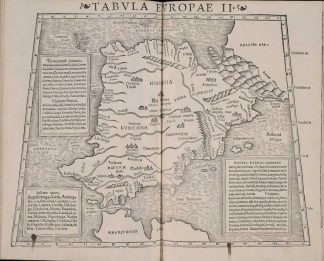By Allison Campbell-Jensen
Objects — material things — have been critical to education at the University of Minnesota since it was founded, says Sally Gregory Kohlstedt, Professor of History of Science, Technology, and Medicine. The first University President, William Watts Folwell, argued for a natural history museum in his first inaugural address, for example. Building collections has been on the University’s agenda ever since.
The students in Kohlstedt’s honors course this fall, “Campus Obscura: Cabinets of Curiosity at UMN,” are visiting several U collections and museums as they explore the reasons for why they are an intimate part of the U. And at one site, they felt the experience was close to hands-on.
Interacting with libraries and archives
To carry out the visits, now virtual, Kohlstedt relies on librarians and curators.
“I can only [teach the course] if I have the people who are engaged in collecting that material help us understand what they have, where it came from, why they’ve maintained it, and how it’s being used today.”
Maps in the James Ford Bell Library, presented by Assistant Curator Anne Good, were the materials for one session. In the students’ journals, Kohlstedt says, some noted they had not thought of maps as political, depicting the lands that Spain claimed at a certain time, for example, or that maps made history.
University Archivist Erik Moore introduced the students to University yearbooks, which begin in the late 19th century (now digitized). Kohlstedt says: “They were astonished to see how active students were on campus. Students belonged to clubs and engaged in a lot of intramural sports. [What are] the dynamics of a student community then and now?”
Yearbooks at the U are long gone, so the students might consider what Moore should be collecting to show student life today?
Technological help
As part of their session on the history of books, Wangensteen Historical Library of Biology and Medicine Curator Lois Hendrickson and Assistant Curator Emily Beck used a tool new to them — a document camera. It’s part of the new Health Sciences Library.
“When students can see your hands manipulating the materials, it gives them some of the feeling of seeing the book in person,” Hendrickson says. “They can hear the pages turning and get an idea of the size of the materials.”
Student Brooke Bratrud likes their approach. “Even though we weren’t there to see them physically handing the book — some were huge — that was really helpful.” It was virtual but felt nearly hands-on. Another student, Farha Ismail, says she could “see the development of printing techniques advancing as they went through one book after another.”
The curators also gave the students online booksellers’ catalogs to look at. “You want to get them engaged in thinking about why rare books and libraries matter,” Beck says, “How do you develop a collection? How do you determine the value of things intellectual and otherwise?”
“They were astonished to see how active students’ were on campus.”
—Sally Kohlstedt, about her students’ reactions to historical Gopher yearbooks.
The students were assigned to choose a book from the catalogs before class, and present their rationales to Kohlstedt and the curators.
“They actually got quite enthusiastic about the book they chose,” Kohlstedt says. “One of the assigned readings was about how you can ‘read’ a book if you don’t know the language. How do you get inside of a book by looking at all those physical characteristics that also define it? Actually half the class chose Japanese or Chinese books. They were intrigued. . . . They could figure out what it was because the description of the book was in English and then could leaf through part of the book because that is what the catalog would let you do.”
Ismail appreciated that the rare book catalogs included non-Western items. These days, Hendrickson and Beck prioritize collecting materials from Japan, China, and Korea so the Wangensteen’s collections can tell a story of the history of medicine that is more global.
No matter the language, a book with history is imbedded in it.







